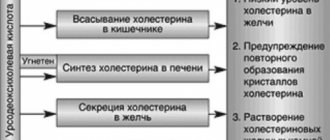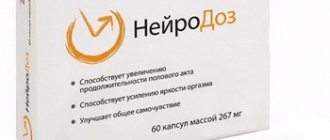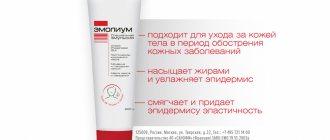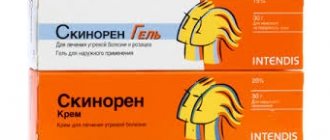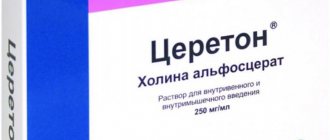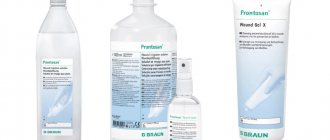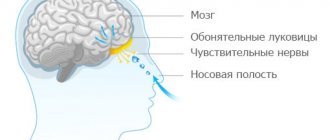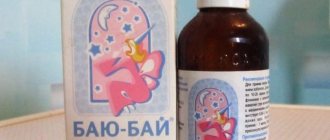The information is for reference only. Do not self-diagnose or self-medicate. Contact your doctor .
Among them, Furadonin is considered to be one of the most effective.
If it is not available in the pharmacy chain, you can select a suitable analogue that has a similar composition and effect.
pharmachologic effect
The medicine belongs to the group of nitrofurans and is an antimicrobial drug. Bactericidal and bacteriostatic effects are achieved by disrupting the process of protein synthesis in bacteria and the permeability of the cell membrane. Furadonin demonstrates activity against a number of gram-positive and gram-negative bacteria (these are Shigella , streptococci , staphylococci , Escherichia coli , etc.). Effective in the development of urinary tract infections.
During treatment with this drug, bacterial resistance rarely develops, but with prolonged use of the drug, resistance is still possible.
The most pronounced drug activity is observed in acidic urine. If the urine pH is 8 or more, the bactericidal activity of the product is noticeably reduced.
Answering the question whether Furadonin is an antibiotic or not, it should be noted that this drug is not an antibiotic.
Acute cystitis (AC) refers to uncomplicated lower urinary tract infections (LUTI). Urinary tract infections (UTIs) are among the most common infectious diseases that require significant financial costs. In Europe, there is a lack of adequate data on the prevalence of various UTIs and their impact on the quality of life of patients. There is also a lack of data regarding the economic costs associated with these infections, in particular to the health care system. At the same time, such information is extremely necessary for the effective operation of the healthcare system. Data obtained in other countries and populations, such as the United States, can only partially be applied to the situation in Europe. In the United States, UTIs account for more than 7 million physician visits per year, of which more than 2 million are related to cystitis [1]. About 15% of all outpatient antibiotic prescriptions in the United States, at a cost of more than $1 billion per year, are prescribed for UTIs [2]. Moreover, the direct and indirect costs of community-acquired UTIs exceed US$1.6 billion per year [1].
In the European Association of Urology (EAU) guidelines for the management of patients with kidney, urinary tract and male genital infections (2008), all studies are classified according to the level of evidence (LE) of the data, and each recommendation developed on their basis is assigned to the appropriate category (Table . 12)
.
Urine dipstick testing as an alternative to sediment microscopy is a reasonable alternative to urinalysis for the diagnosis of uncomplicated AC [3, 4] (LE: 2a, GR: B).
Bacteriological examination of urine is recommended in the following cases: if the patient has received antibiotics in the last 3 months; if there are signs of pyelonephritis; in men; in women with complicated or recurrent UTIs, or over the age of 65 years; when planning empirical therapy with fluoroquinolones or cephalosporins in regions where the level of drug resistance is above 10%; if recent antimicrobial therapy has been ineffective [5-7] (LE: 4, SR: B).
Based on bacteriuria of more than 103 CFU/ml in midstream urine, a microbiological diagnosis can be made in women with clinical signs of uncomplicated AC [9] (LE: 3, SR: B).
Antibacterial therapy (ABT) is the mainstay of treatment for uncomplicated UTI. Its effectiveness depends not only on the sensitivity of the pathogens, but also on the concentration of the drug at the site of infection, as well as the severity of the underlying and concomitant diseases in the patient, the pharmacokinetic characteristics of the drug, and possible side effects. Empiric antibiotic therapy, which for uncomplicated infections should begin immediately after diagnosis, plays a decisive role in the effective treatment of urogenital infections.
Antibiotic therapy is recommended because clinical efficacy is much greater in women treated with antibiotics compared with placebo [8, 9] (LE: 1a, GR: B). The choice of antibiotics for empirical therapy should be based on the following: the spectrum and sensitivity of uropathogens that cause UTIs; effectiveness for special indications in clinical trials; tolerance; side effects; price; availability.
In accordance with these principles and the available sensitivity characteristics of pathogens in Europe and in many countries, first-line therapy, if available, is considered to be fosfomycin trometamol (single dose of 3 g), pivmecillin (400 mg for 3 days) and nitrofurantoin macrocrystals (100 mg 2 times a day for 5 days) [10-12] (UD: 1a, SR: A). Co-trimaxozole 160/800 mg twice daily for 3 days or trimethoprim 200 mg twice daily for 5 days can be used as first-line therapy in areas where Escherichia coli
<20% [13, 14] (LE: 1b, SR: B).
According to the international ARESC study, conducted between 2003 and 2006 with the participation of research centers in 10 countries, the highest sensitivity of E. coli
was detected to fosfomycin trometamol, in all countries (98.3%), to nitrofurantoin - 94, 8% in 6 out of 10 countries, to ciprofloxacin - 92.3% in 3 countries, therefore, these drugs, showing high clinical and microbiological effectiveness, are recommended by the EAU as the drugs of choice for the treatment of uncomplicated UTI.
The goal of ABT for AC is rapid relief of symptoms, prevention of relapses and complications. Short courses of ABT for AC have the following advantages: high degree of patient compliance with the prescribed treatment regimen, lower cost of treatment, low incidence of adverse reactions, reduced selection of resistant strains. However, the prescription of short courses of treatment is possible only in the absence of risk factors, which include age over 65 years; pregnancy; duration of symptoms persisting more than 7 days; recurrence of infection; use of diaphragms and spermicides; diabetes.
If back in 2005, fluoroquinolones were, according to the EAU recommendation, the drugs of choice for the treatment of patients with uncomplicated UTI, already in 2006, according to the results of the international ARESC study, we were convinced that 92% sensitivity of E. coli
to fluoroquinolones was detected in only 3 out of 10 countries. Resistance in Gram-negative bacteria is a significant problem worldwide, especially among Enterobacteriaceae, which produce extended-spectrum β-lactamases (19th European Congress of Clinical Microbiology and Infectious Diseases, Helsinki, 2009).
Conducted in 2010-2011. in Russia, the DARMIS study showed that E. coli
to fluoroquinolones, even in uncomplicated lower urinary tract infections, approaches 10%, and in complicated UTIs, it almost reaches the critical level for ineffective empirical therapy - 20%
(Table 3)
.
The most active oral drugs against E. coli
were fosfomycin (98.4%), furazidin potassium (Furamag) (95.7%), nitrofurantoin (94.1%), and third-generation oral cephalosporins (ceftibuten and cefixime).
It must be taken into account that for the effective use of antimicrobial drugs - the main and mandatory component of UTI therapy, there is insufficient data on the structure of pathogens without data on the sensitivity of uropathogens in the region. Despite the fact that the main causative agent of UTIs is E. coli
sensitive to many antibiotics, the rational choice of drug is currently limited by the level of resistance of uropathogens. It is generally accepted that antimicrobials should not be used as empirical therapy if the rate of resistance to them exceeds 10-20% in the population. That is why, in order to determine the possibility of using antimicrobial drugs of various groups as empirical and etiotropic therapy for UTI, data are urgently needed to determine changes in the etiology and resistance of pathogens to them.
The results obtained during the DARMIS study (2011) allow us to analyze the frequency of isolation of resistant strains of UTI pathogens. It is quite natural that due to the dominance of E. coli
In the etiological structure of UTIs, the greatest practical interest is, first of all, data on the total resistance of all isolated pathogens of the
Enterobacteriaceae (Table 4)
, especially Escherichia coli.
Thus, the drugs of choice for the treatment of uncomplicated UTIs in Russia are fosfomycin and potassium furazidine (Furamag); third-generation cephalosporins and fluoroquinolones can be used as alternative drugs (Table 5)
[15] (UD: 1b, SR: B).
Short courses of ABT should be used in patients without risk factors (1-3 days), which increases the degree of patient compliance with the prescribed treatment regimen, reduces the risk of adverse reactions, intestinal and vaginal dysbiosis, and does not lead to the selection of resistant strains of pathogens. The duration of treatment with nitrofurans and third-generation cephalosporins should be at least 5 days.
The duration of treatment depends on the drug chosen. Fosfomycin trometamol is a broad-spectrum antibiotic, for AC it is prescribed once, its peak concentration when taking 3 g of the drug is reached after 4 hours and persists for 80 hours (see figure)
[16].
Figure 1. Destruction of the developing biofilm of uropathogenic E. coli strains by fosfomycin [16].
MIC—minimum inhibitory concentration. Despite more than 60 years of experience with the use of nitrofurans in clinical practice, E. coli
as the main causative agent of UTI, it exhibits a low level of resistance to this group of drugs. The persistence of the pathogen's high sensitivity to nitrofurans can be explained by the following. Along with fosfomycin trometamol, drugs of the nitrofuran series have rather limited indications for use - acute and recurrent cystitis, postcoital prophylaxis, prevention of complications before invasive urological interventions (cystoscopy, etc.). At the same time, nitrofurans have a multidirectional mechanism of action on the microbial cell. This allows nitrofurans to maintain high not only clinical, but also microbiological effectiveness for many decades. In European countries, one of the drugs of choice for the treatment of NSTI is macrocrystalline nitrofurantoin, which is not available in Russia.
Furamag is furazidine potassium salt in combination with basic magnesium carbonate in a 1:1 ratio, therefore, when taken orally, it has higher bioavailability than regular furazidine (furagin). The concentration of furazidine in the blood and tissues after taking furamag (lasts from 3 to 7-8 hours) is relatively small, the concentration in the urine is higher than in the blood (detected after 3-4 hours). Furamag is slightly biotransformed (less than 10%), with a decrease in kidney function, the intensity of metabolism increases. Furamag is excreted by the kidneys by glomerular filtration and tubular secretion (85%), partially undergoing reverse reabsorption in the tubules. At low concentrations in urine, filtration and secretion processes predominate; at high concentrations, secretion decreases and reabsorption increases. When urine is acidic, reabsorption increases; when urine is alkaline, excretion increases. Furamag is active against gram-positive and gram-negative microorganisms ( Streptococcus, Staphylococcus, E. coli, Enterococcus, Salmonella, Shigella, Proteus, Klebsiella, Enterobacteriaceae
), protozoa (
Lamblia
), etc. The drug disrupts redox reactions in the microbial cell, destroys the microbial wall and/or cytoplasmic membrane. Furamag is a bactericidal drug that inactivates and modifies bacterial ribosome proteins and other macromolecules [17]. The effectiveness and safety of Furamag have been proven in numerous clinical studies in adults and children [18]. Furamag, unlike other nitrofurans, contains, in addition to potassium furazidin, basic magnesium carbonate, which provides significantly higher bioavailability and allows you to achieve optimal therapeutic concentrations in urine when used in a lower dose than nitrofurantoin and furagin. This explains the very low incidence of side effects of Furamag compared to other nitrofurans. In addition, animal experiments have proven that furamag is 3.5 times less toxic than furagin and 8.4 times less toxic than nitrofurantoin [19].
The high effectiveness of Furamag for NIMP in women was demonstrated in a multicenter study that included 114 patients with AC. Furamag was prescribed at a dose of 150 mg/day for 5 or 7 days. The clinical and bacteriological effectiveness of the drug was 96 and 95.5%, respectively, without differing with 5- and 7-day use. These data made it possible to recommend a 5-day course of Furamag (150 mg/day) for acute NSTI in women, including postmenopausal women. It is important that Furamag does not cause dysbiosis even with long-term treatment.
In the Federal Guidelines for the Use of Medicines (2014), potassium furazidine (Furamag) is included as the drug of choice for uncomplicated UTI (OC, recurrent cystitis). The duration of treatment for AC is 5 days.
In the Russian national recommendations “Antimicrobial therapy and prevention of infections of the kidneys, urinary tract and male genital organs” (2014), furazidine potassium salt in combination with basic magnesium carbonate (Furamag) is included as the drug of choice for recurrent (uncomplicated) UTI, treatment with full course doses 100 mg 2 times 7 days.
Thus, the main treatment method for AC, which refers to uncomplicated UTI, is ABT. The effectiveness of treatment for AC depends on the correct choice of drugs for empirical therapy, taking into account knowledge of the principles of ABT, data on the structure of pathogens and the sensitivity of uropathogens in the region.
Indications for use of Furadonin
Before starting treatment, the patient must understand what Furadonin tablets are and what they help with. The following indications for the use of Furadonin are determined:
- infectious-inflammatory diseases of the urinary tract, which are provoked by microorganisms sensitive to Furadonin ( urethritis , pyelonephritis , cystitis , pyelitis );
- For the purpose of prevention, it is used for cytoscopy , urological surgical interventions, catheterization.
Before you start treatment with Furadonin, you should find out from a specialist what these tablets are for and how to take them.
Note!
The description of the drug Furadonin on this page is a simplified author’s version of the apteka911 website, created on the basis of the instructions for use.
Before purchasing or using the drug, you should consult your doctor and read the manufacturer's original instructions (attached to each package of the drug). Information about the drug is provided for informational purposes only and should not be used as a guide to self-medication. Only a doctor can decide to prescribe the drug, as well as determine the dose and methods of its use.
Contraindications
The following contraindications to the use of the drug are determined:
- high sensitivity to the drug;
- chronic renal failure ;
- chronic heart failure of the second or third degree;
- cirrhosis of the liver;
- acute porphyria ;
- hepatitis in chronic form.
Also contraindications to taking Furadonin are the period of pregnancy and lactation, the age of the child under 1 month.
Furadonin
Analogs from the category “Antimicrobials”
Analogs from the category “Anti-infectious and antiparasitic drugs”
Use during pregnancy and lactation Overdose Interaction Side effects Contraindications Indications for use Pharmacological action Characteristics Chemical name
FDA category of effect on the fetus is B. Breastfeeding should be discontinued during treatment.
Overdose
Symptoms: vomiting. Treatment: taking large amounts of fluid leads to increased excretion of the drug in the urine. Dialysis is effective.
Interaction
The antibacterial effect is reduced by nalidixic acid; absorption is reduced by antacids containing magnesium trisilicate. Agents that promote the excretion of uric acid (probenecid, sulfinpyrazone) can inhibit secretion by the renal tubules, thereby reducing the level of nitrofurantoin in the urine (decreasing the antibacterial effect) and increasing in the blood (increasing toxicity).
Side effects of Furadonin
From the nervous system and sensory organs: peripheral neuropathy, asthenia, dizziness, headache, drowsiness, nystagmus.
From the respiratory system: interstitial changes in the lungs, broncho-obstructive syndrome, fever, cough, chest pain.
From the gastrointestinal tract: hepatitis, cholestatic syndrome, nausea, vomiting, abdominal pain, diarrhea, pancreatitis, pseudomembranous colitis Allergic reactions: lupus-like syndrome, arthralgia, myalgia, anaphylaxis, chills, eosinophilia, rash.
Furadonin contraindications
Hypersensitivity, chronic renal failure, chronic heart failure of II-III degree, severe liver pathology (including cirrhosis of the liver, chronic hepatitis), deficiency of glucose-6-phosphate dehydrogenase, acute porphyria, early infancy (up to 1 month).
Indications for use Furadonin
Bacterial infections of the urinary tract (pyelitis, pyelonephritis, cystitis, urethritis), prevention of infections during urological operations or studies (including cystoscopy, catheterization).
pharmachologic effect
Pharmacological action - bactericidal, broad-spectrum antibacterial. Inhibits the synthesis of DNA and RNA, proteins, the formation of cell membranes, and inhibits aerobic metabolism. Effective against gram-positive and gram-negative bacteria, incl. Staphylococcus spp.
, Streptococcus spp., Shigella dysenteriae, Shigella flexneri, Shigella boydii, Shigella sonnei, Escherichia coli. Well absorbed from the gastrointestinal tract.
The rate of absorption depends on the size of the crystals (the microcrystalline form is characterized by rapid solubility and absorption rate, a short period of reaching Cmax in the urine). The presence of food in the gastrointestinal tract may increase bioavailability.
Penetrates the placenta and blood-brain barrier and is excreted in breast milk. Metabolized in the liver and muscle tissue. It is completely excreted from the body by the kidneys (30–50% unchanged).
Characteristic
Yellow or orange-yellow crystalline powder, bitter in taste. Practically insoluble in water and alcohol.
Chemical name Furadonin
1-[[(5-Nitro-2-furanyl)methylene]amino]-2,4-imidazolidinedione (and as sodium salt)
Side effects
During treatment with this drug, the following side effects may develop:
- allergic manifestations: chills, rash , Quincke's edema , etc.;
- disturbances in the functioning of the respiratory system: cough, eosinophilia , pain in the chest, pulmonary infiltrates, decreased respiratory function, asthma attacks in people with a history of bronchial asthma
- disturbances in the functions of the digestive system: vomiting, anorexia , nausea, epigastric discomfort, in rare cases - hepatitis , jaundice , diarrhea ;
- disturbances in the functioning of the nervous system: dizziness, headache , drowsiness ;
- disorders of the hematopoietic system: granulocytopenia , leukopenia , thrombocytopenia , agranulocytosis , anemia ;
- skin reactions: erythema , dermatitis ;
- other disorders: arthralgia , anaphylaxis , myalgia , drug fever, superinfection of the genitourinary tract.
If the side effects described above occur during treatment, you should definitely consult a doctor.
basic information
The drug belongs to the group of antimicrobial nitrofuran agents. It is not an antibiotic, but is capable of exerting a bacteriostatic and bactericidal effect on many types of pathogenic microorganisms (staphylococci, streptococci, Klebsiella, Escherichia coli, Salmonella, Shigella, etc.).
The mechanism is based on suppression of the synthesis of protein compounds in the walls of bacteria. Thus, the permeability of the cell membrane deteriorates, microorganisms cannot reproduce and die.
The main active ingredient is the synthetic substance nitrofurantoin. Furadonin is classified as a powerful antiseptic, not an antibacterial drug. A characteristic feature is the low level of pathogen resistance to nitrofurantoin.
Available in the form of tablets of 30, 50 and 100 mg, as well as in the form of a suspension for oral administration. Once in the body, it is quickly absorbed by the walls of the gastrointestinal tract and tends to penetrate the placental barrier and into breast milk. It is excreted mainly by the kidneys unchanged. During treatment, urine turns dark red.
In rare cases, side symptoms may occur in the form of allergies, abdominal pain, diarrhea, difficulty breathing, severe drowsiness, and disturbances in the rheological properties of the blood.
Often, women develop candidiasis or dysbiosis while taking the drug, so it is advisable to take antifungal drugs and probiotics in parallel.
Furadonin is a fairly inexpensive drug and is available in pharmacies without a prescription. The average cost is in the range of 60-150 rubles per package (depending on the concentration of the active component).
Indications and contraindications
Furadonin is widely used in urological practice for the treatment of acute or chronic diseases in the urinary system (cystitis, pyelonephritis, urethritis, pyelitis).
It is prescribed for preventive purposes during surgery (on the bladder, kidneys, etc.), installation of a urological catheter, and cystoscopy. Prescribed in complex therapy of bacterial-fungal or bacterial-viral infection. Helps with repeated relapses of diseases.
Among the main contraindications it is necessary to highlight:
- intolerance to components;
- renal pathologies;
- liver dysfunction (hepatitis, cirrhosis, etc.);
- problems with the cardiovascular system;
- congenital or acquired deficiency of B vitamins and the enzyme glucose-6-phosphate dehydrogenase;
- pregnancy and breastfeeding;
- patient age up to 1 month;
- inflammatory process in the prostate gland;
- purulent form of paranephritis.
It is important to note that for children under 3 years of age, Furadonin is prescribed in the form of a suspension. For all other age groups - tablets with different concentrations of the active substance.
Similar means
Today, pharmacists produce a large number of domestic and foreign analogues. Their selection is carried out exclusively by the attending physician, otherwise there is a high risk of complications.
Domestic substitutes
There are no direct analogues of Furadonin, but several drugs from the nitrofuran group can be identified that have a similar effect:
- Furazolidone. Available
in the form of capsules and soluble tablets for preparing a suspension. Used to treat cystitis, pyelitis and urethritis, inhibits the synthesis of bacterial cells. Contraindications are the same as for Furadonin. Side effects include allergies, nausea, vomiting and nervous disorders. For the treatment of pyelonephritis it is used as one of the components of a comprehensive diagnosis. The price of the drug is 50-150 rubles per package. - Furazidin . Another representative of the nitrofuran group. It has the same indications for use as the main drug. Not prescribed for pregnant women and children under 4 years of age, as well as for those with individual intolerance to this group of drugs. With the correct dose, no adverse reactions occur. Available in pharmacy chains with a prescription at prices ranging from 200 to 450 rubles per pack.
Foreign synonyms
There are also no direct analogues of Furadonin among foreign drugs, but a large number of drugs are produced that have a similar effect. Below is a list of the most popular:
- Furagin . Belongs to the group of nitrofurans and is used to treat acute and chronic diseases of the urinary system. It has a bacteriostatic effect, slowing down the process of hydrogen ion transfer by bacterial cells. Thus, the respiratory function of microorganisms is disrupted, which leads to their death. Not prescribed for pregnant and lactating women, children under 7 days after birth, patients with impaired liver and kidney function. Side effects include headache and dizziness, intestinal dysfunction, and allergic reactions. Sold in pharmacies for 170-250 rubles per pack, produced in Latvia.
- Furamag. The drug is produced in Latvia and also belongs to the group of nitrofuran drugs. Available in the form of enteric-coated capsules of 25 and 50 mg of active substance. It has a high bactericidal concentration and is considered one of the most effective drugs for the treatment of infectious diseases of the urinary system. Significantly reduces intoxication of the body and activates immune functions. It has the same contraindications as Furadonin. Adverse symptoms are rare. The average cost is 400-600 rubles per package.
- Furasol. Another Latvian-made drug, available in the form of tablets and powder for the preparation of a suspension. It has a powerful bactericidal effect and is prescribed to patients with genitourinary diseases. In the form of a solution, it is used for bacterial conjunctivitis. Not prescribed for pregnant and lactating women, children under 4 years of age, and patients with allergies to nitrofurans. To reduce the risk of developing side symptoms, it must be taken together with vitamin complexes (group B) and antihistamines. In acute forms of cystitis, douching with Furasol solution is prescribed. Price - 400-550 rubles.
Both drugs belong to the same pharmacological group and have similar indications for use. Some doctors claim that Furagin is more effective, it also has a milder effect and is less likely to cause side symptoms.
The main active component of Furagin is the synthetic substance furazidin. It has a powerful antibacterial effect and is available in the form of capsules, tablets and powder for preparing a suspension.
The difference from Furadonin is the ability to use this drug to prevent relapses, since microorganisms cannot resist it.
Furagin has a number of advantages, among which it is worth highlighting:
- lack of systemic effect on the body;
- activation of the immune system by increasing the function of protective protein compounds and the absorption function of leukocytes.
Can I take it simultaneously with Nitroxoline?
Both of these drugs belong to the group of nitrofurans. Taking them together is prohibited, as this leads to an overdose and can cause serious disturbances in the functioning of the nervous system.
Reviews from experts
In the absence of Furadonin, doctors often prescribe its analogues; almost all of them speak positively about them. Below are some expert opinions.
I consider Furamag the most effective analogue of Furadonin. It has long established itself in the medical drug market. Perfectly helps cope with bladder and kidney infections. With the correct dose, it does not cause side symptoms.
Danilov S.P., urologist
I recommend taking Furagin, it is an effective drug for treating infections of the urinary system. Affordable and well tolerated by patients.
Nazemtseva R.K., urologist
Patients' opinions
All analogues of Furadonin are popular, as evidenced by positive reviews from people. Here are a few of them:
I was faced with acute cystitis, the doctor prescribed Furadonin, but I couldn’t find it in pharmacies. I purchased an analogue of Furagin. I was very pleased with the medicine, after 3 days all the unpleasant symptoms disappeared. The price is quite reasonable.
Furadonin tablets, instructions for use (Method and dosage)
Instructions for use of Furadonin stipulate that the drug should be taken with plenty of liquid, preferably taken after meals. Since the tablets have a bitter taste, chewing them is not recommended, especially for children. The highest daily dose for adult patients is 0.6 g, a single dose is 0.3 g.
Instructions for use for adult patients include taking 0.1-0.15 g of medication 3-4 times a day.
For uncomplicated infectious diseases, Furadonin should be taken 50 mg three times a day.
Patients with acute urological diseases take the drug for 7 to 10 days. If no improvement in the patient’s condition is observed during the period of therapy, further treatment with the drug is not advisable. In order to prevent relapses of diseases and for prophylaxis, the drug should be taken in a dose of 1-2 mg per 1 kg of weight.
Instructions for use for children
For children, the medicine is prescribed at the rate of 5-7 mg per 1 kg of child weight per day. The total dose should be divided into 4 doses. With long-term use for the purpose of prevention, it is enough to take a dose of 1 mg per 1 kg of weight per day.
Those who are interested in how to take Furadonin should note that the effect of the drug on the body becomes more pronounced in an acidic environment, so it is recommended to prefer protein foods during treatment.
The medicine Furadonin is widely used for cystitis. A specialist will tell you in detail how to take Furadonin for cystitis in each specific case. Treatment of cystitis with Furadonin tablets is practiced for both acute and chronic forms of the disease. As a rule, taking 3-4 tablets of the drug per day is indicated (unless the doctor has prescribed a different regimen on how to take tablets for cystitis).
In what cases is Furadonin prescribed?
The drug is active against 11 bacteria and is used in the complex treatment of kidney and urinary tract diseases in the acute and chronic stages:
- cystitis and urethritis,
- pyelitis and pyelonephritis.
Furadonin tablets are used to prevent bacterial complications that occur after operations and insertion of catheters, before the patient undergoes a cytoscopic examination of the bladder. To relieve acute symptoms of the disease, adults and adolescents from 12 years of age are prescribed one tablet twice a day after meals. The medicine is swallowed and washed down with water. Relief in the patient’s well-being occurs a few hours after the medication enters the body. Tablets for cystitis Furadonin for chronic bacterial infections are used four times a day for a week.
Interaction
You should not simultaneously take Furadonin and antacid preparations containing magnesium trisilicate , as well as nalidixic acid , as this reduces the antibacterial effect of the drug.
You cannot combine the medicine with fluoroquinolones .
Drugs that block tubular secretion due to a decrease in the concentration of nitrofurantoin in the urine reduce the degree of antimicrobial effect of the drug and also increase the concentration of this substance in the blood, which leads to increased toxicity of the drug.
The antibacterial effect of Furadonin decreases in alkaline urine. Therefore, there is no need to take this remedy in parallel with medications that increase urine pH.
The process of removing Furadonin from the body is reduced by sulfinpyrazone and probenecid , therefore, the simultaneous use of these drugs is undesirable.
special instructions
It should be taken into account that in people suffering from hypovitaminosis B , anemia , diabetes , electrolyte imbalance during treatment with Furadonin, the likelihood of peripheral neuropathy .
Not used for the treatment of prostatitis , purulent paranephritis .
To reduce the risk of side effects from the gastrointestinal tract, the drug should be taken with food or milk.
Nitrofurantoin should not be prescribed together with medications that can cause renal dysfunction.
Furadonin's analogs
Level 4 ATX code matches:
Furagin
Furamag
There are no structural analogues of Furadonin. There are a number of analogues of this drug according to the mechanism of therapeutic effect, these drugs are:
- Furasol
- Furagin
- furazidine
- Furamag
Furadonin or Furagin - which is better?
Furagin belongs to the same group (nitrofuran derivatives). The indications for use of both drugs are similar, and at the same time they provoke the development of almost identical side effects. It is generally accepted that Furagin is a milder medicine. But the final decision on the choice of drug should be made only by a specialist, which requires consultation with a doctor.
Furadonin analogues: for cystitis, without side effects
Are there analogues of furadonin? The genitourinary system is very often subject to infection. Cystitis, urethritis, pyelonephritis, unpleasant diseases that require urgent treatment. The question arises, with what? Most often treated with furadonin. It is not an antibiotic and does not affect the intestinal flora. It has several analogues that also treat inflammation of the urinary system. This is what our article is about.
Furagin
The medications are not antibiotics and do not have a negative effect on the immune system. Most bacteria caused by sensitive ones (staphylococci, E. coli, genital tract infections) react equally to them.
The drugs act on the microorganism itself, destroying its shell, reducing the amount of toxins. The therapeutic effect occurs in the first days of taking the tablets.
They activate the body's defenses, which makes recovery faster. Prescribed for the following pathologies:
- Infections of the excretory tract.
- Cystitis, pyelonephritis.
- Medical manipulations.
Obvious signs of the disease disappear the next day. They can be taken for the chronic form and are prescribed for prevention.
https://www.youtube.com/watch?v=mVmrSPVTNyM
What is the difference between the drugs? In their composition. Furadonin consists of the active substance nitrofurantoin, furagin from furazidin.
The doctor must take into account that the patient may have an allergic reaction to some medicine. They are interchangeable for cystitis and urethritis.
With long-term use there is no addiction. Both are contraindicated for children under 3 years of age, pregnant and lactating women.
Side effects
Cause the same effects:
- Nausea.
- Nervous disorders.
- Dysbacteriosis.
You should not take them uncontrollably. Treatment should be carried out under the supervision of a physician.
Furamag
The main active ingredient belongs to one group of furazidins. Furamag has additional magnesium and potassium, which contribute to the rapid absorption of the drug.
The drugs have the same activity against pathogens. Addiction develops slowly, which makes it possible to take it for a long time without harm to the intestinal flora. They are not antibiotics, but have a strong antimicrobial effect.
- While taking tablets or capsules, you must drink a large amount of liquid so that toxins are removed from the body and do not poison it.
- These drugs are used to prevent diseases of the urinary system, as an auxiliary treatment for severe infectious lesions.
- This group of medications is used during surgery on the bladder, during various medical procedures (cystoscopy, catheter installation) to avoid the development of inflammation.
Frequency, course of administration, dosage are approximately equal. The difference is in the manufacturer and price. Furamag - Latvia, much more expensive.
Side effects
They act the same. The drugs cause nausea, stomach discomfort, drowsiness, and tinnitus. In some cases, there is itching or hives.
The question of which drug is better cannot be answered unambiguously. They have the same indications for use, but affect the body differently.
The doctor must write a prescription based on individual characteristics. The medicine must be taken strictly as prescribed by the doctor. Do not exceed the dosage, follow all recommendations.
Monural
It is most often prescribed for acute forms and is considered very strong. It contains phosphonic acid, which is an antiseptic.
According to patients, cystitis can be treated in 2-3 days with monural. It is available in the form of a suspension and powder for dilution.
Take twice a day, morning and evening. The peculiarity is that before taking it you need to empty your bladder so that the effect is more effective.
Monural is well tolerated, does not affect the intestinal microflora, and has no contraindications. It can be used by pregnant and lactating women.
5-NOK
In most cases, it is better to take it than furadonin. It is often used for chronic pyelonephritis.
Treatment can be carried out in courses of two weeks. The duration of treatment is several months. After entering the stomach, it is absorbed by 90%.
It is used for inflammation of the urinary system, acute and chronic pyelonephritis, prostatitis, adenoma. If we compare drugs for cystitis, then furadonin is more effective. It relieves the acute course of the disease faster.
The question is often asked whether it is possible to use nitroxoline (5 NOC) and furadonin at the same time. If we are talking about acute cystitis, then there is no point, they have the same effect.
Nitroxoline has a minimum of side effects. Nausea and stomach problems occur very rarely.
Furazolidone
Furadonin is antimicrobial and is always prescribed for acute cystitis. Getting into the blood and lymph, it kills microbes that cause inflammation. It has many contraindications and adverse reactions.
Furazolidone has a different direction in treatment. It is often used to kill parasites and microorganisms. Some doctors consider it ineffective in treating cystitis.
When it is established that the disease is caused by parasites, furazolidone is used only in that case. He is auxiliary. It has a different active ingredient and functions differently. You cannot purchase medicine without a prescription.
Nolitsin
Many substitutes differ from furadonin in their composition, but the effect they produce on infections of the genitourinary system is identical.
To properly treat the disease, you need to make a correct diagnosis based on certain tests. Only a specialist will do this.
Self-medication with antimicrobials and antibiotics can be counterproductive. The disease will become chronic and it will be very difficult to cure. Read new articles on our website.
https://www.youtube.com/watch?v=Cy3FIorGrE0
Furadonin during pregnancy and lactation
Furadonin during pregnancy increases the risk of developing hemolytic anemia in the baby. The active substance passes through the placenta and has a toxic effect on the fetus. In some cases, Furadonin is used to treat pregnant women after 12 weeks, but only strictly as directed and after comparing the possible risks and benefits.
If you are breastfeeding , you should not use this medicine because its active substance passes into breast milk.
Analogs of "Furadonin": what can safely replace the medicine
If a person has inflammation in the genitourinary system caused by bacteria, antibiotics are indicated.
Furadonin is usually prescribed. If it is not available in the pharmacy, but treatment is urgently needed, the pharmacist can select a similar drug.
Medicine information
The product is an antimicrobial nitrofuran drug. It is not an antibiotic in the broad sense; it has a bactericidal effect on a number of pathogens.
It acts according to a simple scheme - it suppresses the synthesis of proteins inside bacteria. Substances do not pass through the cell membrane, the bacteria cannot reproduce and the entire population dies.
The drug contains a substance called nitrofurantoin. It is an antiseptic, not an antibiotic. Its peculiarity is that the infection has almost no resistance to this medicine.
There are several forms of tablets - 30, 50 and 100 milligrams, but there are also suspensions. The substance dissolves in the gastrointestinal tract, can pass through the placenta and enters breast milk. Excreted via the kidneys. Because of it, the urine turns red.
Side effects are possible but rare. Usually these are allergies, diarrhea, shortness of breath, drowsiness, and blood disorders.
Women may develop thrush, so you can use antifungal suppositories and take probiotics at the same time.
This medicine is inexpensive and sold without a prescription. The price does not exceed 150 rubles per pack and depends on the dose.
Indications for use
The medicine is often prescribed by urologists to treat various diseases of the urinary system.
Can be used for prophylaxis after surgery on the genitourinary system, when placing a catheter, or cystoscopy. May be part of therapy for fungi, viruses or bacteria. Can be used for relapses.
There are contraindications:
- allergic reaction;
- kidney disease;
- kidney diseases;
- disturbances in the functioning of the cardiovascular system;
- deficiency of B vitamins and a special enzyme;
- pregnancy and breastfeeding;
- age up to a month;
- inflammation of the prostate gland;
- paranephritis.
For children under three years of age, a suspension is used. For others, only tablets with different dosages of the substance.
Analogs
Pharmaceutical companies offer a large number of analogues in Russia and abroad. A doctor can select them, assessing all the risks.
Russian analogues
It is difficult to find a direct replacement for the drug, but there are several drugs with similar effects.
"Furazolidone" is capsules and tablets for dissolution in water. They treat cystitis and kidney diseases; the drug stops the synthesis of bacteria.
Contraindications are similar to Furadonin. Side effects include diarrhea, vomiting, and disturbances in the functioning of the nervous system. If it is necessary to treat pyelonephritis, it is used as a component of the general scheme. Costs up to 150 rubles per pack.
Furazidin belongs to the same group of drugs. Indications for use are the same; it should not be taken during pregnancy or in children under four years of age; it may cause allergies. If the dose is calculated correctly, there will be no side effects. Costs up to 450 rubles per pack.
Foreign analogues
There are no direct analogues among foreign drugs, but there are drugs with similar properties.
“Furagin” is also nitrofuran, it is used to treat chronic and acute diseases of the kidneys and bladder. Stops the proliferation of bacteria and prevents them from transporting hydrogen ions. It does not allow bacteria to breathe, which causes them to die.
Do not take during pregnancy and breastfeeding, for children under one week of age, as well as for kidney and liver diseases. Side effects include headache, gastrointestinal dysfunction, and allergies.
Price – 250 rubles per pack, production – Latvia.
“Furamag” is also made in Latvia and belongs to the same group. Available as capsules weighing 25 and 50 milligrams. The most effective drug for bacterial infections of the urinary system. Reduces the concentration of toxins in the blood, helps allergies work. Contraindications are general, side effects are rare. The cost is high - up to 600 rubles.
Furasol is also produced in the Republic of Latvia and comes in the form of tablets and powder. It affects bacteria and treats diseases of the genitourinary system. The solution successfully fights conjunctivitis.
Cannot be used during breastfeeding and pregnancy, children under four years of age, or if you are allergic to the components of the drug. To reduce the risk of side effects, it is recommended to take it together with B vitamins and allergy medications.
For the treatment of acute cystitis, douching with this medicine is prescribed. Cost – up to 550 rubles.
What to choose: “Furadonin” or “Furagin”
All drugs belong to the same pharmacological group, the indications for them are the same. Some doctors are confident that Furagin is more effective, acts more gently and has no serious side effects.
Furagin's main component is furazidin. It is an antibacterial substance that is sold in the form of capsules, powders and tablets. It is used to prevent relapses because bacteria cannot cope with it.
Furagin has several advantages:
- no systemic effect on the body;
- immunity improves due to an increase in the quality of protein compounds and the absorption capacity of leukocytes.
An overdose of these tablets has more severe consequences. Furadonin is more successful in combating the symptoms of acute cystitis. Therefore, the choice of medicine remains up to specialists. It will be based on the characteristics of the disease.
Can I drink it with nitroxoline?
These medications belong to the same group of drugs.
They cannot be taken together, because an overdose is possible, which can cause a malfunction of the nervous system.
Reviews from doctors
If it is not possible to buy Furadonin, its analogues can be prescribed; there are only good reviews about them.
Petrov S.G., urologist
I consider Furamag to be the best analogue of “Furadonin”. He has good reviews among all urologists. Successfully fights kidney and bladder diseases. If you choose the right dosage, there are no side symptoms.
Kirka L.V., urologist
I prescribe Furagin because it is effective for most diseases of the urinary system. It is inexpensive, and patients respond well.
Reviews about Furadonin
Reviews about Furadonin are mostly positive: patients write about the high effectiveness of the product. Reviews of Furadonin for cystitis indicate that this remedy allows you to get rid of unpleasant symptoms within a few days. There are also positive reviews that the drug is relatively cheap.
However, quite often there is information from patients about the manifestation of side effects: headaches , nausea , vomiting , dizziness , etc.
Furadonin price, where to buy
The price of Furadonin 50 mg tablets is on average 60 rubles. per pack 10 pcs. The average price of Furadonin 100 mg is 180 rubles. per pack 20 pcs.
- Online pharmacies in RussiaRussia
- Online pharmacies in UkraineUkraine
- Online pharmacies in KazakhstanKazakhstan
ZdravCity
- Furadonin Avexima tablets 50 mg 20 pcs. JSC Irbitsky HFZ
115 rub. order - Furadonin tablets 100 mg 20 pcs Olainfarm JSC
177 RUR order
- Furadonin Avexima tablets 100 mg 20 pcs. JSC Irbitsky Chemical Plant
RUB 187 order
- Furadonin Avexima tablets 50 mg 10 pcs. JSC Irbitsky Chemical Plant
72 RUR order
- Furadonin tab. 50 mg 20 pcs. YuzhPharm LLC
76 RUR order
Pharmacy Dialogue
- Furadonin Avexima tablets 50 mg No. 20 Irbitsky HFZ
108 RUR order
- Furadonin Avexima tablets 50 mg No. 10 Irbitsky HFZ
69 RUR order
- Furadonin (tab. 50 mg No. 20) YuzhPharm
72 RUR order
- Furadonin (tab. 50 mg No. 20) YuzhPharm
70 rub. order
- Furadonin Avexima (tab. 100 mg No. 20) Irbitsky Chemical Plant
RUB 179 order
show more
Pharmacy24
- Furadonin 0.1g No. 20 tablets AT "Olainfarm", Latvia
49 UAH. order
PaniPharmacy
- Furadonin tablets Furadonin tablets 0.1g No. 20 Latvia, Olainfarm JSC
51 UAH order
show more
